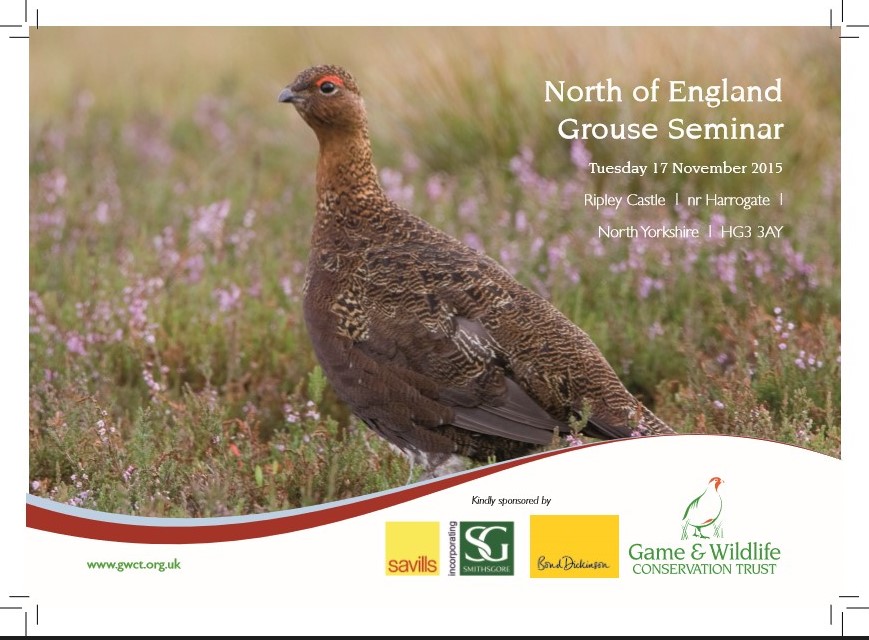I’m grateful to Natural England for getting in touch today over the issue of medication of Red Grouse raised in Ruth Tingay’s Guest Blog of Monday.
Here is what NE wrote:
‘In the recent guest contribution to your Blog, Dr Ruth Tingay asked for clarification from Natural England and Scottish Natural Heritage (SNH) regarding the legality of catching up of red grouse for the purposes of administering a veterinary medicine.
On behalf of Natural England, I can clarify the situation in England. English and Scottish environmental law differ and you will need to seek advice from SNH if you require further clarification regarding the situation in Scotland.
Natural England’s understanding of the relevant law on this topic is set out in our advice note we published in 2012: ‘Catching and releasing wild game birds: a legal summary’ (TIN104). Although the note does not specifically refer to catching birds to administer an anti-helminthic medicine (the topic discussed at the seminar), the legalities of catching grouse are the same.
In brief, grouse, like other game birds, may be caught for the purposes of veterinary treatment outside of the close season, which means capture is lawful between 12 August and 10 December (inclusive). However, the use of cage traps, nets, or spotlights at night to catch grouse will require a Natural England licence. There is no legal provision in England to issue a licence to permit grouse to be caught in the close season to administer medication or for any other reason.
Anyone seeking advice on the regulations governing the use of veterinary medicines is recommended to contact the Veterinary Medicines Directorate.’
I am grateful to NE for that. It seems clear that today is the last day that one could catch a Red Grouse in England to dose it by hand (and if you are setting out in the next few hours to do so you will have to be fleet of foot as you cannot use most aids to trapping unless you have a licence already).
Your next opportunity will be on 12 August 2016 as you cannot even apply for a licence to carry out this management task in the close season.
Of course, you cannot medicate your grouse within 28 days of the possibility of them entering the human food chain either.
It seems as though Robert Benson knew his stuff and was right on the illegalities of catching birds for dosing. I’m sure that the GWCT will be grateful for this clarification.
It is thought that a certain amount of catching, dosing and release goes on in the grouse moors of northern England every spring and summer – this is not legal, never has been and should cease. Presumably the WCTG will be making this known, to their staff and their members as a matter of urgency so that no-one breaks this particular law tomorrow. Other laws are available and some are broken regularly on some grouse moors.
Does SNH have a clarification to make too?
Wouldn’t we just be better off without all this intensive management of grouse and their habitats in our hills? I think so and if you agree then please sign this e-petition to ban driven grouse shooting.
[registration_form]

Oddly the GCT publication highlighted in the RPS blog (it is labelled GCT so it may be an old one) states that dosing should be undertaken in winter.
“Direct dosing. This involves catching individual grouse at night by spotting them with a high-powered light and then administering an oral anthelmintic drug to them. Currently the most commonly used drug is Levamisole hydrochloride …………….The major period for the treatment of the birds is through the winter months into the early spring where the aim is to get grouse into good body condition before the start of the breeding season. By catching and treating the grouse through the winter when temperatures are low,the possibility of re-infection is reduced (larvae are not available for ingestion at temperatures below 6oC). All catching and dosing should be finished by mid-April.Once hens become heavy with eggs,handling may cause undue stress.”
Bob – shocking ain’t it?
Must be the result of eating too much game meat with high levels of medicinal residue and toxic lead, an upland form of seasonal disfunctional syndrome (unable to distinguish between autumn & winter) perhaps?
Same information available on their website http://www.gwct.org.uk/advisory/guides/strongylosis-control-in-red-grouse/reducing-worms/
If they are using medicated grit in an SPA, NE (or SNH) must have done a Habitats Regulations Appraisal….. do any exist?